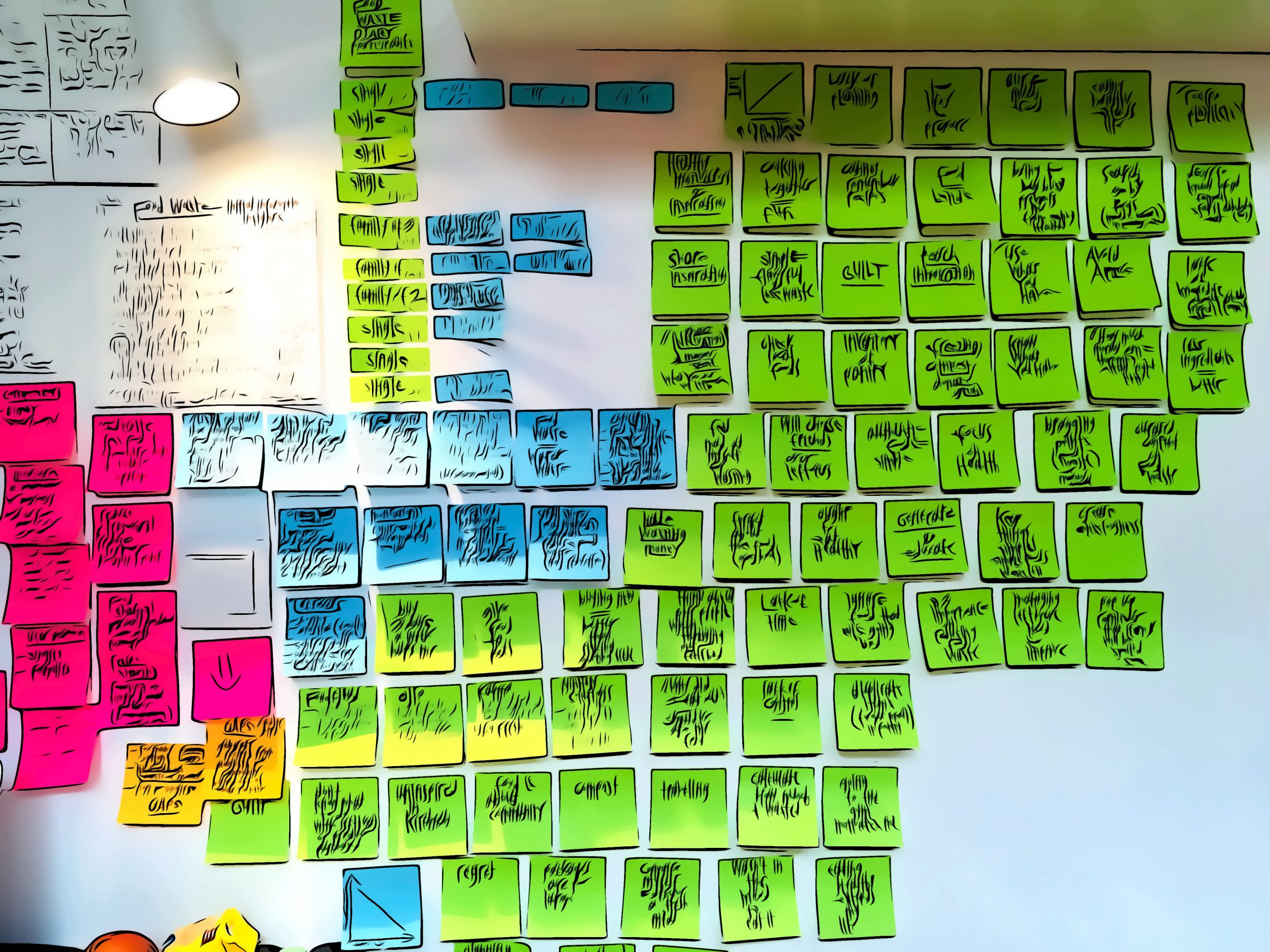Do you keep a journal? I started keeping a hand-written journal in the tenth grade, and have kept journals in one form or another for the past forty years — including a public web site where I wrote almost-daily personal journal entries for fourteen years running.
In the past, I’ve argued that the greatest benefits of keeping a journal is derived from cultivating a daily habit of introspection. For me, reviewing past entries has been less of a priority and more something I do when questions from friends prompt me to look things up. (“What was the restaurant in Corfu where you and Clyde had the lemon calamari and apricot baklava?”)
Recently, inspired by how my father-in-law’s practice of reviewing photos kept his memory sharp, I decided to experiment with reviewing old journal entries on a regularly scheduled basis. What if, every day, I spent five to ten minutes reading back over a week’s worth of past journal entries?
Good news: if, like me, you have a wealth of old journal entries to explore … you have a powerful resource at your fingertips for knowing yourself better, making better decisions, and achieving deeper insights.
And there’s more good news: you can use this fun, simple process whether your journal is detailed and thoughtful (with long, heartfelt passages detailing the day)… or interstitial (with time-coded bullet lists capturing achievements and milestones).
(Don’t really keep a journal? No worries. Try doing this exercise with your phone’s camera roll … or even your credit card charges!)
Ready? Let’s get started!
Set Up Your Experiment
Rather than make this into a huge commitment, consider conducting an experiment: a small, time-bound project that you can fulfill with minimal effort over a set period of time.
In my case, I committed to conducting one ten- to fifteen-minute review of a week’s worth of entries every day for a month. When I missed a day, I didn’t beat myself up; instead, I got right back on the horse, as they say, on the following day. (This approach is inspired by meditative practice: when you notice your thoughts drifting, you don’t criticize yourself … you just gently correct your focus.)
This structure felt “do-able” to me. You should feel free to create your own, of course!
(This experiment is also on-going, as I’m just in Week Two … but part of my reason for maintaining this site is to share what I’m learning by doing. So here I am, sharing the process … while I’m inside the process!)
Create a Space for Completing Your Review
I’m currently journaling in Obsidian, a powerful tool for linking thoughts and ideas together. I write in my Obsidian journal every morning, and, most of the time, jot notes about reflections and activities throughout the day.
Over morning tea, I open my Daily Notes Page (or DNP). My DPN is based on a template that reminds me to capture my weight and blood pressure, capture whatever’s on my mind, and make notes about the events of the day.
For the purposes of this experiment, I’ve added a new section: Past Entry Review. (Actually, I call it a “Treadmill Review,” based on that story about my father-in-law reviewing old photos as he exercised each day, but unless you know that story, a “Treadmill Review” might sound plodding and difficult!)
Every day, this section header reminds me to choose a week from the past and read the entries from that week.
If you don’t journal with a template, you might consider giving yourself another kind of cue — something that reminds you of your commitment to the process, from a sticky note to a watch alarm to a treasured knick-knack — that you’ll encounter when you sit down to make a journal entry.
Choose the Entries
At first, because I haven’t read the handwritten journals from my high school years in decades, I thought I would begin there. But those are long and emotional and, frankly, more than a little breathless.
Rather deal with all that for this experiment, I found inspiration in the fact I’ve just completed a year with Obsidian. So: I decided to drop back and read the entries I created about a year ago.
Don’t get hung up on this choice, though. Any entries will do; the point is to have a plan, so you don’t waste time debating where to get started every day.
Review the Entries
The first time I conducted a review, I used the Calendar plug-in to click back to entries logged a year ago. I like the fact that Calendar makes it easy to spot days with entries (you just look for the little dots indicating entry length under each calendar day) and navigate back to them with just a click.
For my project, I started with a Sunday entry, and then read each entry captured during that week. The next day, I read the entries from the following week … and so on.
There’s nothing magical about this structure — it just works for me, and limits the choices I have to make each time I do a review. If your entries tend to be long, you might start by reading one or two entries per session. If you entries are short, you might read more.
Decide What You’ll Capture as You Review
Reviewing past entries is easy. Deciding what you want to capture as you review them is a bigger challenge.
At first, I found myself trying to write detailed summaries of each day, which took a lot of time. In the end, as I read each entry, I limited myself to noting one to three major themes. Now, my entries look a bit like this:
[[2021-06-05]] – back and forth on [[Obsidian]] vs. [[Roam]]. Minister discouraged us from joining church. Went from [[Noom]] back to [[Weight Watchers]] app.Reading the entries on a daily basis kept the details of the running story fresh on my mind, while my brief summaries just captured main points.
Of course, this is just what worked for me! As you work, you’ll discover the level of detail that works best for you. (Don’t be afraid to tweak that level as you go!)
Look for Repeating Themes and Emerging Patterns
Over the first two weeks of the experiment, I kept a list of insights I gained along the way. Here’s my list:
- Headers are good. In 2021, instead of a simple bullet list of stream-of-consciousness observations, I divided journal entries up with topic-based headers: Health, Obsidian, Diet, etc. For some reason, I stopped doing this. I want to start that practice up again, because it makes re-reading entries much easier.
- Big issues start with small issues. A friend having major struggles with his employer now had minor struggles a year ago. In retrospect, a health challenge I’m dealing with today had seeds in events twelve months earlier. It’s worth asking yourself (as a journaling exercise, perhaps), “Which of the small challenges being faced now have potential to grow into major challenges if I fail to take action now?”
- Where can I stop dithering? Some themes (for me, obsessions with diet and health) persist, but never come to a satisfactory resolution. Maybe it’s time to either do something about them … or stop worrying about them.
- My use of Obsidian evolved rapidly. I adopted Obsidian as a note-taking tool, but it quickly became my go-to environment for tracking ideas, planning projects, and writing everything I write.
- Link every mention of every person. When I’m diligent about linking names, visiting a person’s page presents me with a rich, backlinked history of every conversation, dream, thought, or idea related to them. What an amazing resource!
- Memory is a tricky beast. I had forgotten entirely a pleasant evening at a local food and music festival. A story a friend told me about his childhood made it into my journal … but not my memory! (In fact, I have no recollection of his telling me the story at all!)
- My reading habits are changing in ways I don’t like. A year ago, my reading list contained a lot of fiction and non-fiction books. Today, I’m more likely to be reading blog posts and watching videos. I miss being a more dedicated reader of in-depth, long-form work.
I’ve gained all these insights after re-reading just ten weeks’ worth of entries over two weeks of this experiment!
In Old Journal Entries, Gold Awaits!
While it’s true that a lot of the power of journaling comes from living a more examined life, I think I’ve underestimated the value of revisiting old entries.
Looking back through sequential entries on a regular schedule makes it possible see past events in context … see patterns emerging in your thoughts and habits … recapture lost memories … and witness your own growth (and opportunities for growth) from a deeply personal perspective.
Journaling about these insights can help you integrate this “found wisdom” in your present-day life — perhaps influencing the choices you make and the paths you take right now, today.
Why not give it a try?







